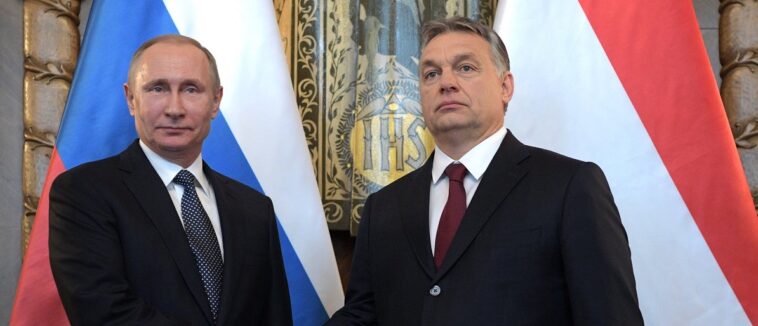The Hungarian regime does not hide its political partnership with Russia, and in 2022 the state also announced “deeper cooperation with Iran”, another ally of the aggressor state. In an interview for Budapester Zeitung, the country’s prime minister Viktor Orbán claims that because of the Hungarian minority in Ukraine, Hungary has long been physically involved in the Russian-Ukrainian war. However, the politician constantly emphasizes that the Russian-Ukrainian war is “not Hungarians’ war” and Hungary cannot help Ukraine without destroying its own economy, and predicts a “quick end” for Ukraine. Meanwhile, the Hungarian government financed a large-scale PR campaign against the anti-Russian sanctions, comparing them to a “bomb killing the Hungarian economy.”
Pro-Russian optics is also tightly connected with Hungarian revisionism, examples of which have appeared in Hungarian school textbooks, mentioning “historic Hungarian cities at the foot of Carpathian mountains in Ukraine, Uzhhorod, Mukachevo, and Khust”, which are in fact parts of Ukraine. The Russian-Ukrainian war was also depicted as “a conflict between two ethnic groups in Ukraine: Ukrainian and Russian speakers”.
Revisionism can also be tracked in the statements of Hungarian far-right politicians. One of them, László Toroczkai, congratulated Poland on Independence Day with a photo from 1939, when Hungary occupied Carpathian Ukraine and a Pole met a Hungarian at the border post, dreaming of “meeting again at the common Polish-Hungarian border”. The Prime Minister of Hungary repeatedly publicly broadcasts sentiments towards revisionism: he publishes a globe with a map of the so-called “Greater Hungary”, and wears a scarf with its map, which also happened this year, during a football match between Hungary and Greece in Budapest. The territory of “Greater Hungary” includes the territories of modern Ukraine, Slovakia, Romania, Croatia, and Serbia. Hungary lost all these territories under the terms of the Treaty of Trianon (1920).

